Yucatan Specialties
Hello, dear readers and foodies of all types!
You were waiting for it, here it is finally! The last part of this culinary saga is about Mexican gastronomy.
You have been waiting for it with impatience, here it is at last! The last part of this culinary saga about Mexican gastronomy.
After having made you salivate with our previous episodes on antojitos, tacos and other emblematic Mexican dishes, it's time to turn to the region that interests us the most: the Yucatan Peninsula!
If you come on vacation to Cancun and the Riviera Maya or the rest of the peninsula, you cannot miss the gastronomy of this region.
On the program: essential spices and flavors!
To learn more about iconic Caribbean dishes, keep reading! Our little dictionary of Mexican gastronomy is there to accompany you.
To guide you in your taste discovery of Yucatan we have indicated, as always, spicy, gluten-free, and vegetarian dishes thanks to the following list of pictograms:
- 🌶️ spicy dishes
- 🐄 🐑 🐖 🐓 🐟 type of meat
- 🌽 gluten-free
- 🌾 vegetarian friendly
- 🌮 in tacos
🌶️ Achiote :
It is a typical flavor of Latin America. It is usually used in Mexican cuisine to flavor sauces and dishes from the Yucatan peninsula.
The achiote is extracted from the fruit of the achiote, a small fruit from which a red paste is extracted that decorates dishes such as chimichanga, tamales, or enchiladas that are among the pillars of Mexican gastronomy.
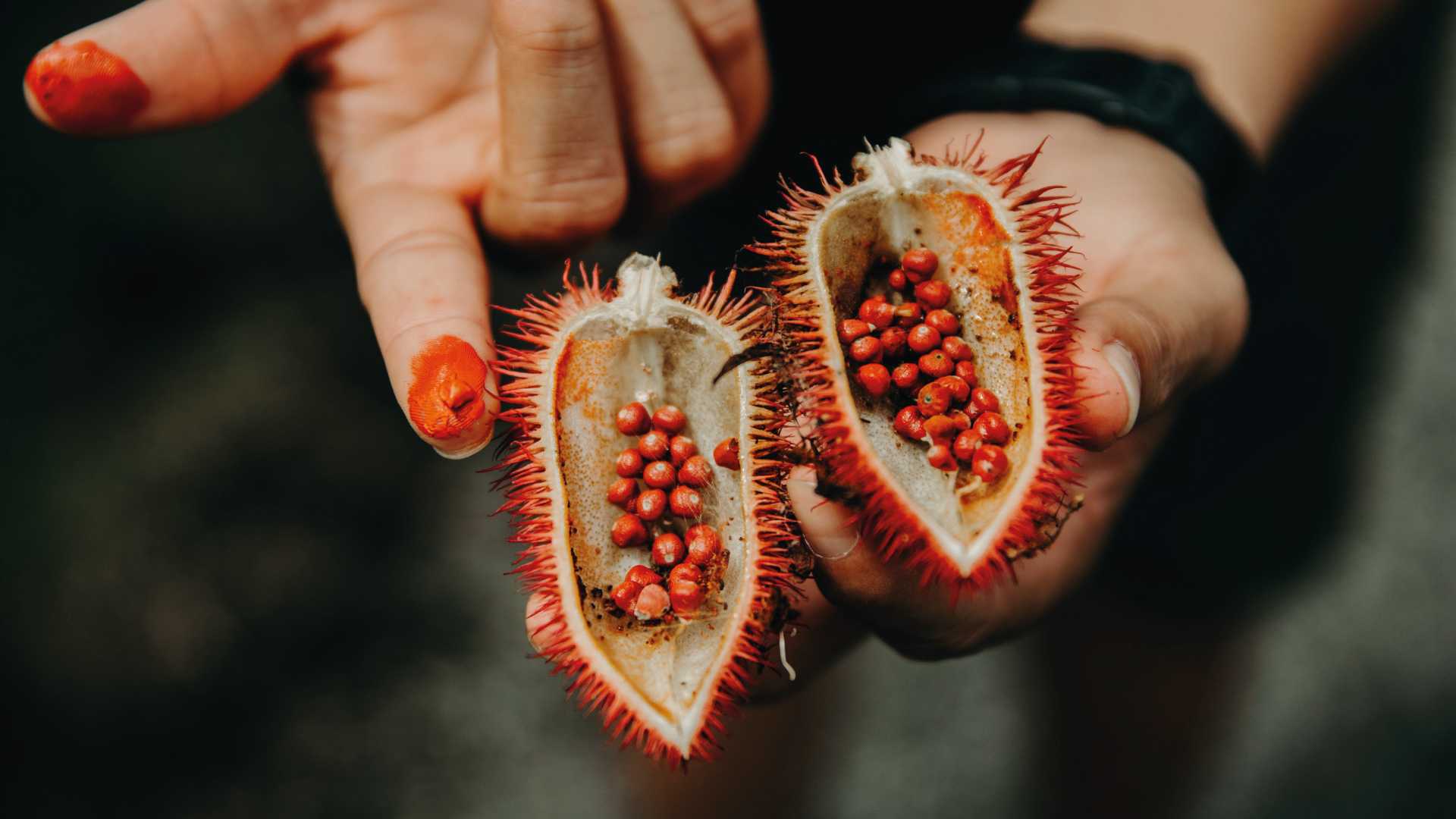
Achiote is also found in the composition of mole, another Mexican culinary specialty that we have already told you about before.
It is also used in the "arrachera adobada" of marinated beef, which is a classic in all Mexican cantinas, which are abundant in Cancun.
If you want to bring home some authentic flavors to extend your vacation in the Riviera Maya on your plates, know that it is possible to buy spices in the markets of Cancun and the other tourist centers of the Riviera Maya.
Go on a food tour with a guide at the stalls of Mercado 28 or Mercado 23.
🌶️ Chiltomate:
The famous red sauce is a classic of Mexican cuisine.
It is made with dried and slightly burned habanero peppers, to bring out the flavor. Some cooked red tomatoes called jitomates are also added. The sauce chiltomate is the perfect accompaniment for the tacos and appetizers that you will find in Episode 1 and Episode 2 of our culinary guide.
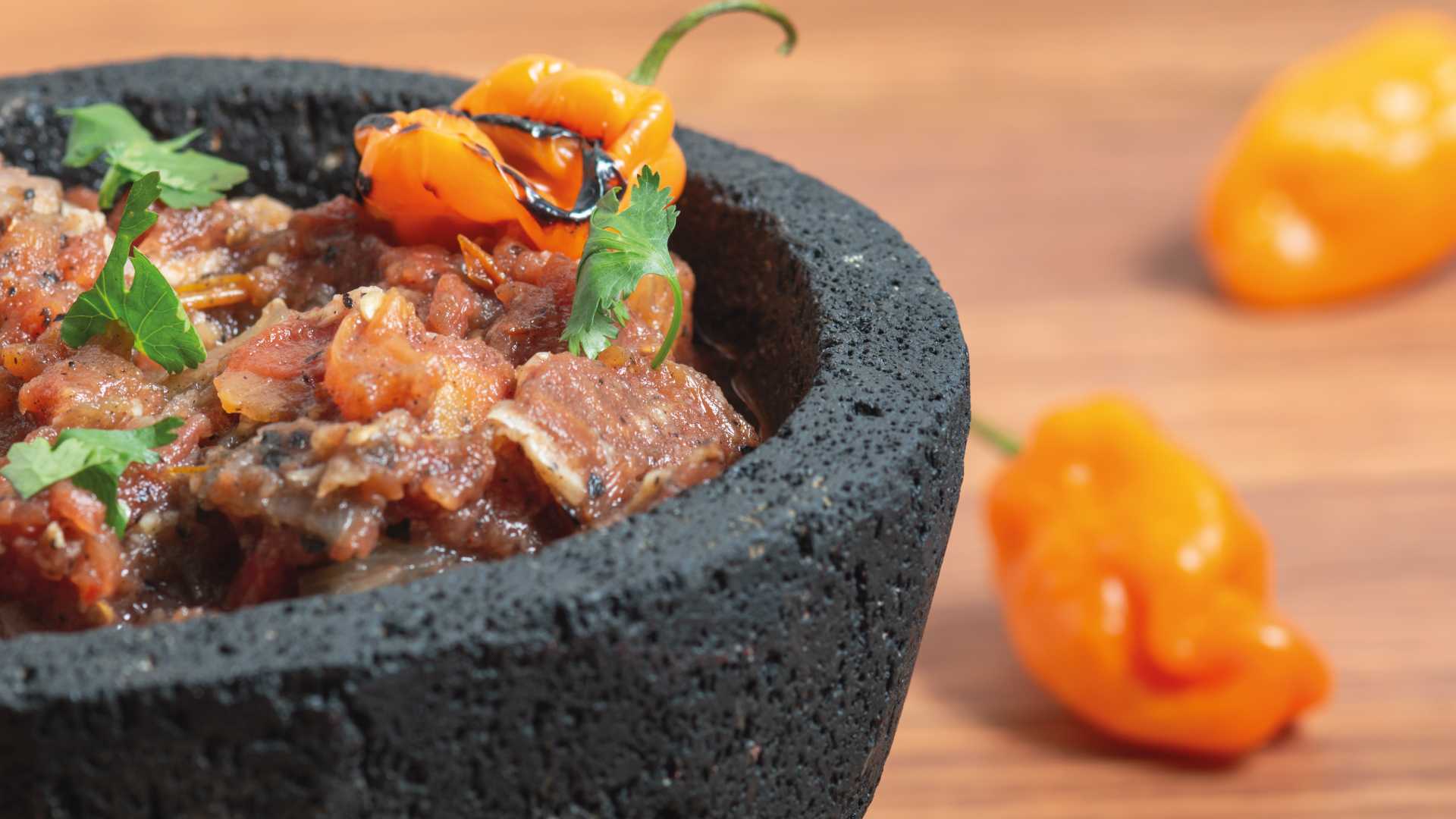
Keep in mind that chiltomate is a Yucatan specialty but has been adopted throughout the country. You can find this type of sauce in all the taco shops in the Riviera Maya, from Cancun to Tulum, as well as in the best restaurants in the region.
🌮 🐖 Cochinita Pibil:
Cochinita pibil is in the Top 3 of the Yucatan specialties that you must try during your vacations in Cancun and the Riviera Maya (if pork is not excluded from your diet).
This is a typical dish from the Yucatan region that combines:
- pork meat cooked for a long time.
- delicious spices that tickle the palate.
- purple onions confit that provides an inimitable flavor.
Enjoy the cochinita pibil in tacos in a corn tortilla (or flour tortilla if you prefer) accompanied by some coriander leaves.

Surely you won't eat just one! 🤤
🍳 Huevos motuleños:
To all the foodies who dream of a true breakfast of champions, to all those who are tired of the continental buffet of standardized hotels, I reveal the well-kept secrets: choose the eggs “al gusto” (your choice) yes, but choose them… ¡motuleños!
Where do Motuleño eggs come from?
Huevos motuleños are a specialty of the Yucatan. They were invented in the city of Motul which is located in the Mérida region not far from Izamal and the archaeological site of Chichén Itzá.
What are the ingredients of Motuleños eggs?
Just imagine... ☁️
A still warm, handmade tortilla, on which you place:
- a layer of mashed, fried beans
- scrambled eggs
- chopped ham 😲
- cooked peas 😱
- fresh cream cheese 😵
- and… fried plantains 🤯
All topped with a red sauce (chiltomate 🌶️) with habanero chili and tomato.
This is probably the most abundant breakfast you can eat in the entire Riviera Maya and the Yucatan Peninsula as a whole.

It’s a perfect dish for visitors to start a day in vChichén Itzá, followed by a dip in a cenote and a half marathon on the boardwalk in the Cancun Hotel Zone.
Do not run away! I was kidding about the marathon 😂
But be careful anyway because as the saying goes (of my invention): “Motuleño egg sleepy you makes”
Understand, high risk of drowsiness!
🐓 🐖 Relleno Negro:
Relleno Negro is a dish typical to Yucatan made from turkey, pork, and eggs. The dish is topped with refried black beans, a kind of puree, and a mixture of spices and chiles called chilmole. Literally it means: "filled with black".
Did you know that? Where does relleno negro come from?
This is a traditional recipe for the Day of the Dead, a practice listed as a World Heritage Site by Unesco in 2008. If you have seen the movie Cóco, you will know that this event is a very important moment in the Mexican calendar.
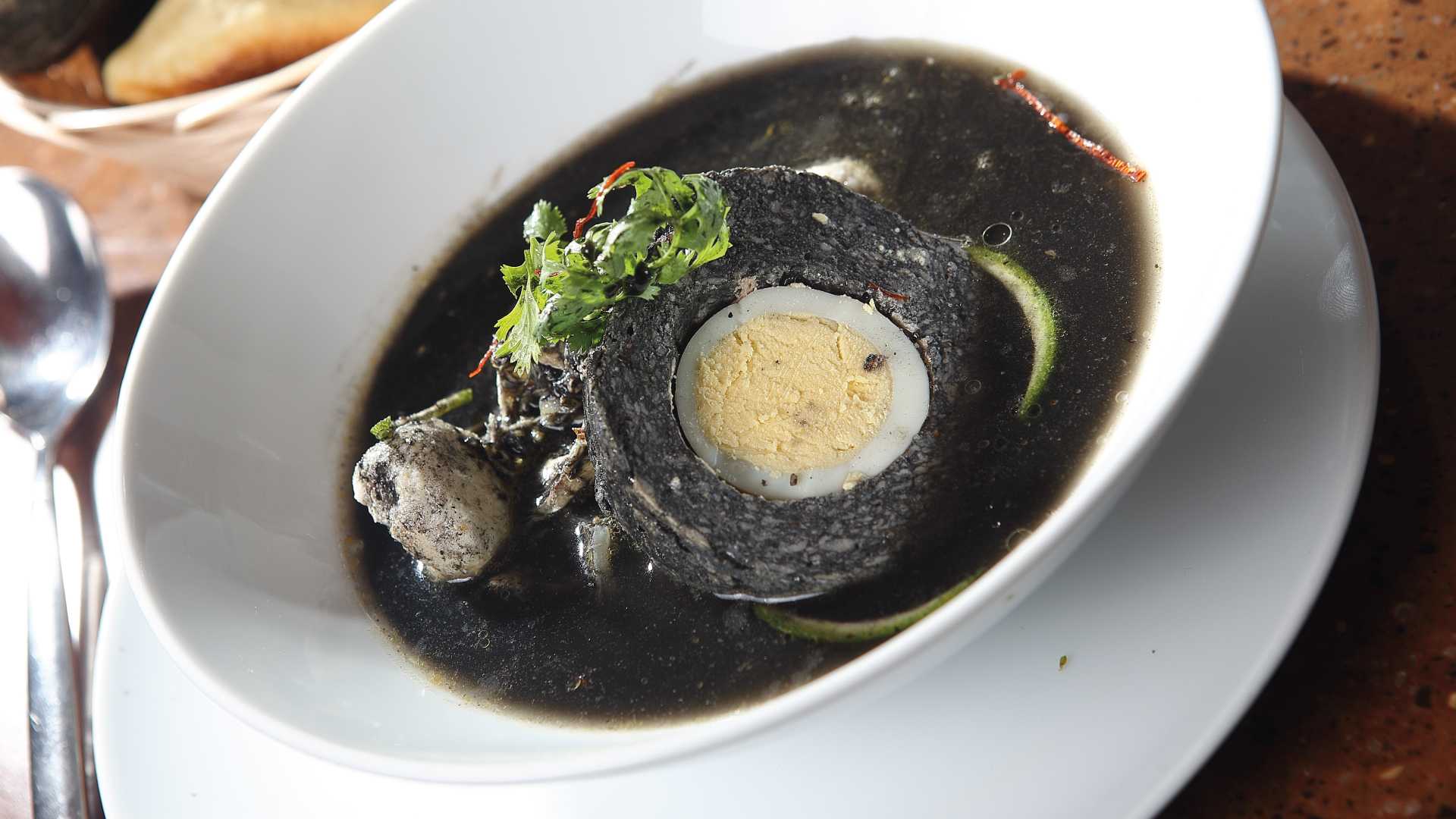
Among the Maya of Yucatán, this celebration is called Janal Pixan. The black filling is nothing more than the offering that is made to the dead of the Yucatan peninsula between October 31 and November 2.
🐓 🐖 Sopa de lima :
Among the Top 3 typical dishes, you can find the famous sopa de lima. It is a dish that you absolutely must try during your vacations in Cancun and the Riviera Maya.
The Yucatan Peninsula has many specialties but sopa de lima is undoubtedly one of the most famous and is a true gem of Mexican gastronomy. The origin of this preparation dates back to the Hispanic culture of the Mayans of Yucatan.
Before we continue, let's take a look at the lime, this essential element of Yucatecan cuisine.
What is lime? 🤔
Lime is a typical citrus from the Yucatan peninsula that looks like a lemon but whose flavor is closer to a slightly sour orange. Citrus fruits were imported into Mexico at the time of the Conquest.
Sopa de lima is therefore the product of the crossbreeding between the Mayan and the Spanish culture.

Sopa de Lima used to be a seasonal dish. Originally, this traditional soup was only found on Mexican tables during the lime harvest period.
Like some other Mexican dishes such as chile en nogada, which is typically eaten around National Day (September 16), lime soup can now be found on the menu of restaurants and cantinas in Cancun at any time of the year.
What is sopa de lima made of?
It is generally made with chicken or turkey meat, accompanied by tomatoes, onions, and sometimes peppers.
The ingredients are incorporated into a lightly flavored broth (cloves, oregano, and cumin) To which the lima juice is added. Once served, the sopa de lima is garnished with shredded tortilla chips. Cilantro, white onion, lime, and habanero pepper complete this rich and very refreshing soup.
Did you know that? Who is the creator of lime soup?
It was in 1946 that sopa de lima was first created by a chef named Katun (meaning warrior in Mayan) in the form it has remained to this day. The way it is still served today in the best restaurants of the Yucatan Peninsula.
👉 Are you looking for restaurant ideas in Cancun and the Riviera Maya? Discover our selection of the best restaurants!
🌮 Panuchos: like a taco (but different, but the same…)
Panuchos are part of the family of antojitos that we already talked about in Episode 1 of this guide through Mexican gastronomy.
Panuchos are one of the culinary specialties of Yucatan.
You will easily find them during your stay in the Riviera Maya in restaurants but also in street stalls and food markets where you will have the opportunity to taste all the delights of Yucatecan cuisine.
👉 Are you looking for ideas for activities around Mexican cuisine? Take a look at our gastronomic tours!
What is a panucho?
The panucho is a small corn tortilla that swells when cooked. Once cooked, an incision is made to fill it with black fried and smashed beans. Then, everything is passed through pork fat to give it a flavor and crunchy texture.
Once fried, the panucho is garnished with shredded chicken meat or an oriental-style escabeche, or some cochinita pibil, another signature dish of Yucatecan cuisine.
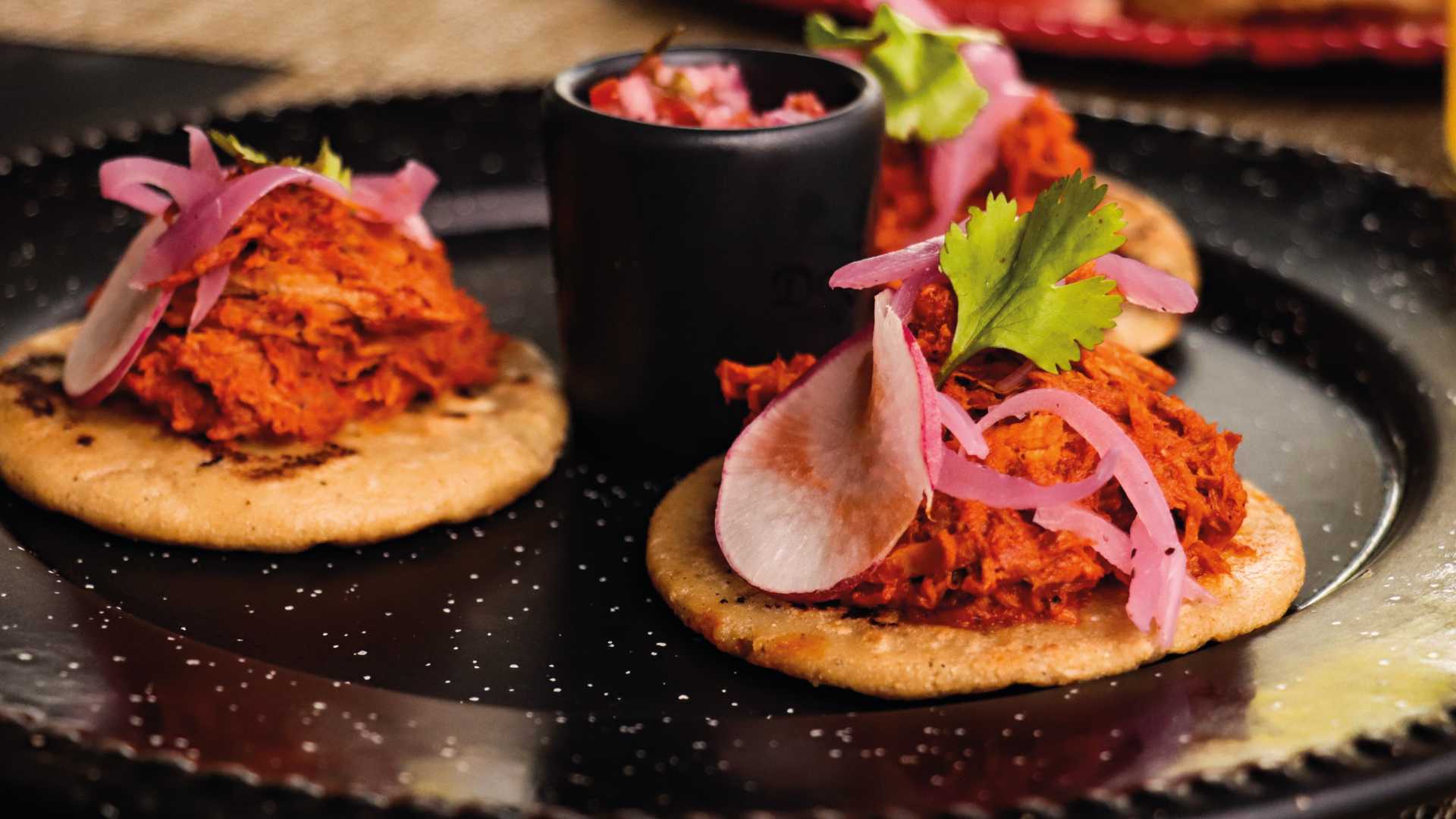
Add a few pieces of purple onion confit in lemon on top and you will have a delicious panucho that will transport your taste buds to the heart of the Yucatan Peninsula.
👩🏫 The history of the panucho:
According to legend, the name of this Yucatecan specialty comes from the creator of this little snack "Don Ucho" which would have been deformed in the long run from "Pan (bread) de Ucho" to "Panucho".
In Mayan, the panucho is known as uah ixi my etel bu uul which means cornbread with beans.
🐖 Poc Chuc
Another dish that deserves to be in the TOP 3 of Yucatan specialties, and shares a tied podium step with the next dish. 👇 👇 👇
And yes, dear readers, that's how we are in Odigoo.
We saved the best for last!
The origins of Poc Chuc: a delicious mystery!
Poc Chuc is an essential dish in the Cancun and Riviera Maya region, but its origins remain uncertain.
It probably originated in the town of Mani located in the heart of the peninsula.
Some say that it was already known in the pre-Hispanic culture, while others that it appeared during the time of colonization. For the most contemporary, it would have been cooked for the first time in Mérida at the Los Almendros where it would have acquired its current recipe.
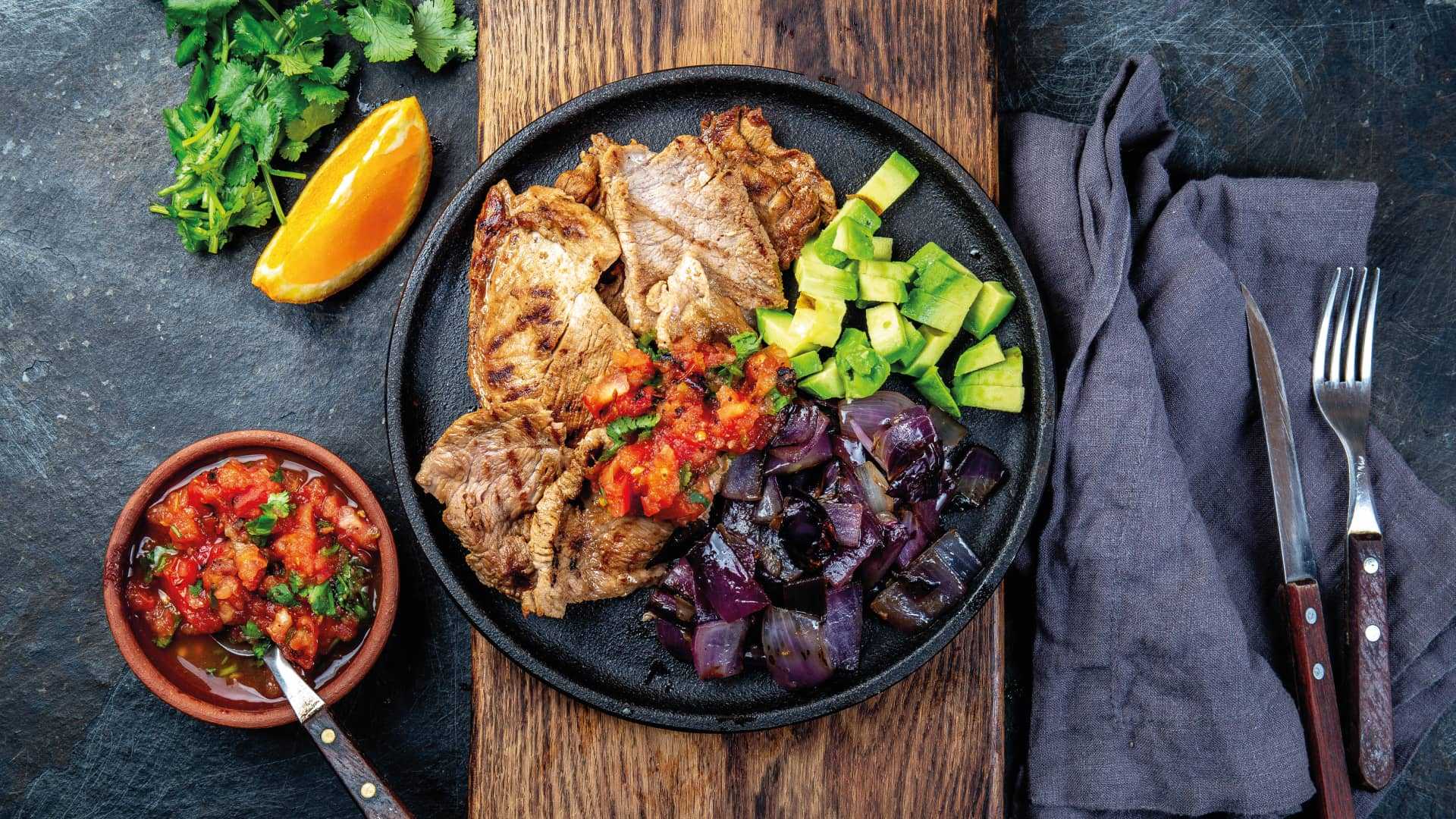
What does Poc Chuc mean?
You guessed it, Poc Chuc is not a Spanish word but native to the language of the communities that populate the Yucatan peninsula.
Its name comes from the Mayan and means "grilled meat" (pok - grilled and chuc - charcoal).
Vegetarians, don’t go there.
The others, go for it!!
🐟 Tikin Xic Fish
We end on a high note with a recipe that will enchant all foodies. This dish honors the products of the Caribbean Sea.
The fish tikin Xic is a typical dish from the Yucatan region.
What makes it special is the fact that it is cooked in banana leaves!
The fish is prepared with a bitter orange juice that gives it that inimitable flavor that will transport you to the shore of a Riviera Maya beach from the first bite.
Add the onion, green peppers, and tomatoes. A bit of chile and achiote to give it color and flavor. And you already have a tasty fish.

Tikin Xic fish is best enjoyed with your feet in the sand during one of your days visiting Isla Mujeres or Cozumel!
👉 More information about the islands of Cancun
That's all dear readers! Here ends our tasty saga about Mexican gastronomy and its countless specialties. Are you sad?
A little? Because I am!! 😭 😭
After such delicious moments shared, I hope I have awakened in you the desire to discover all the richness of this cuisine with inimitable flavors.
Feel free to post photos of your favorite dishes on our Instagram page ! Enough to make the Intenret users and the Odigoo Travel team drool.
Adventurers of taste, let's conquer the flavors of Yucatan! On your marks... Ready...
Tacos!
Did you like this article?
…Find our related topics...
👉 Mexican gastronomy
👉 Recorridos gastronómicos por Cancún y la Riviera Maya
👉 The best restaurants in Cancun and the Riviera Maya
Need Transportation? Get a quote!
Our travel consultants are ready to help you. Schedule a call
Related Topics
PLANNING A TRIP TO CANCUN?
OUR TRAVEL CONSULTANTS ARE READY TO HELP YOU.
Related Topics
Continue Exploring


